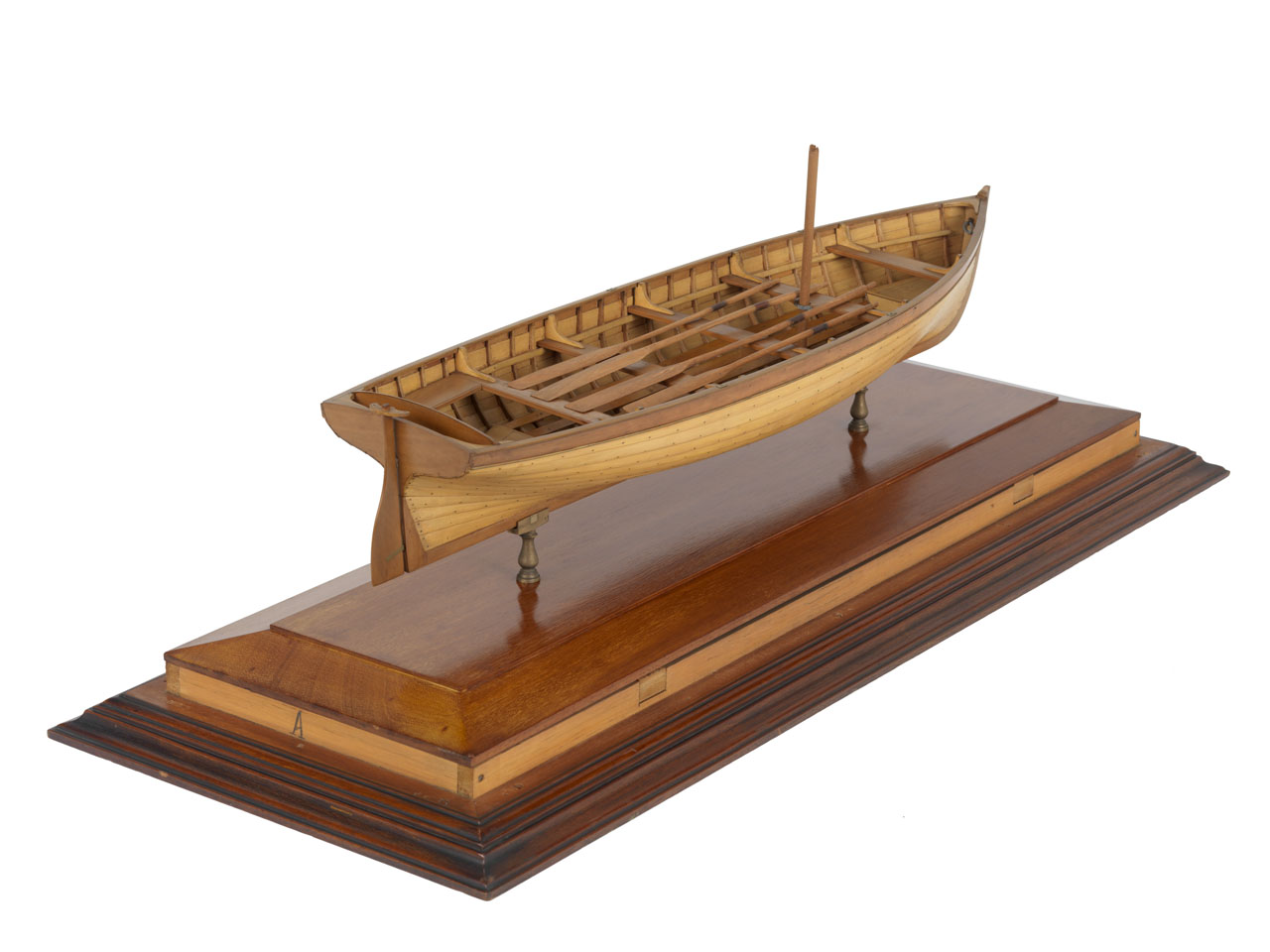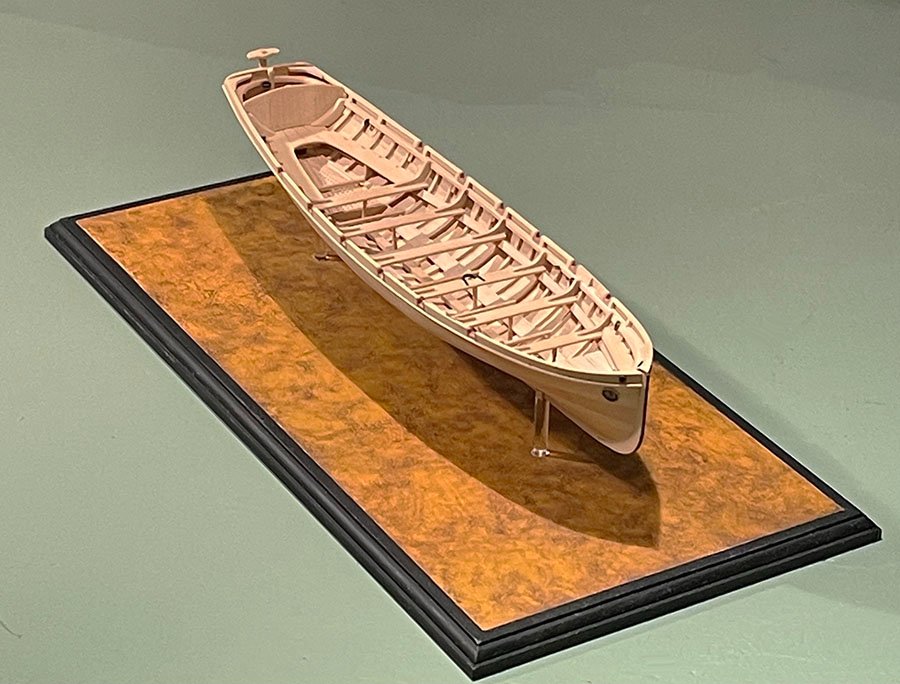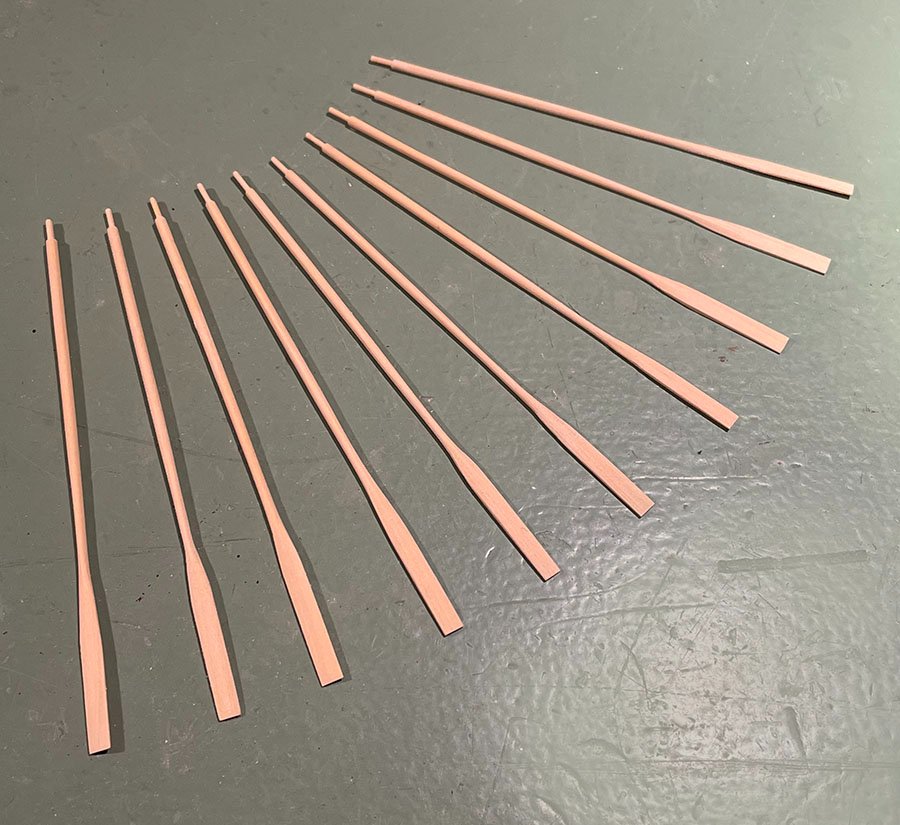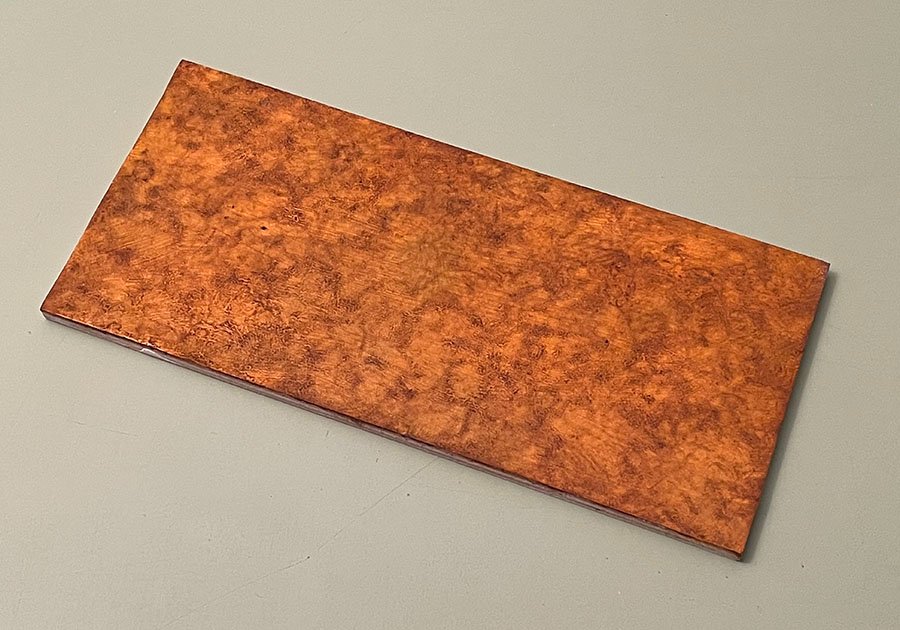-
Posts
13,134 -
Joined
-
Last visited
Content Type
Profiles
Forums
Gallery
Events
Everything posted by druxey
-
Just catching up on this lovely model. Well done, bolin!
- 179 replies
-
- longship
- Helga Holm
-
(and 1 more)
Tagged with:
-
Thanks to all who checked in and commented. Bob: The yoke is based on ones seen on contemporary models (see example below, SLR 1820). None have long arms, so presumably the leverage was sufficient. None show the lines and/or how they were run, but it would be reasonable to assume some kind of leading blocks. There is no indication of any on the cutter in the Venetian museum, so we are left hanging. This model will not show sails or rigging, just oars deployed. The case should be completed on Thursday, so no more can be done until then.
- 433 replies
-
- open boat
- small boat
-
(and 1 more)
Tagged with:
-
Which reminded me of when I was a small child who read early. At my grandmother's was a shared toilet off the landing. The 'works' were a Victorian era extravaganza with a highly decorated bowl. I was mildly terrified to read the name of that particular piece of china. It read, "The Shark". But we digress!
-
So, the moldings I cut and ebonized yesterday have been assembled on the base and the acrylic pedestals installed. The model has been mounted on these using spots of epoxy. I now have to wait for the case to be made before I can mount the base on the much larger sub-base and attach the oars. Almost there!
- 433 replies
-
- open boat
- small boat
-
(and 1 more)
Tagged with:
-

Swan-Class Sloop by Stuglo - FINISHED - 1:48
druxey replied to stuglo's topic in - Build logs for subjects built 1751 - 1800
Good save there, Stuglo!- 475 replies
-
Pat: I simply cut rectangular section blanks for the oars, milled the shaft portions to 3" square, then cut, scraped and sanded the rest by hand and eye, also using a dial gauge for the finished dimensions. Spent part of the day (when not doing remedial work on the house exterior) milling moldings for the base and sub-base and ebonizing them. More soon. Thanks again for all the likes and visits, everyone!
- 433 replies
-
- open boat
- small boat
-
(and 1 more)
Tagged with:
-
There are so many creative solutions to any problem. That's one of them!
- 160 replies
-
- Model Shipways
- norwegian sailing pram
-
(and 1 more)
Tagged with:
-
Now what would be really interesting is for you to build this kit, then build a modern kit version and see how the two compare!
- 26 replies
-
- Maine
- Laughing Whale
-
(and 2 more)
Tagged with:
-
What plug? Nice progress, Toni! My only comment is that I interpret the shaded are at the tip of the knee as being shaved away to a blunt point as seen from above. If you can do that, the carving will look even nicer. Oh, and don't forget the shallow notch for the gammoning. See the Weazle draught.
-
Eberhard: I was lucky this time. I made 12 blanks and did not have to re-do any of the ten. HH: Thank you. If you know the tricks of the trade, faux wood grain of all kinds is not that difficult. A wonderful book on the subject is: Professional Painted Finishes, by the Marx brothers (not those ones!) Allen and Robert and Ina Brosseau Marx, Watson Guptill, 1991.
- 433 replies
-
- open boat
- small boat
-
(and 1 more)
Tagged with:
-
All ten oars are now carved and ready for bindings and leathering. Work continues on the base and pedestals. The latter will be from ⅛" diameter acrylic rod, so as to be minimalist.
- 433 replies
-
- open boat
- small boat
-
(and 1 more)
Tagged with:
-
Yes, softening means a very light rounding off of a sharp edge.
- 160 replies
-
- Model Shipways
- norwegian sailing pram
-
(and 1 more)
Tagged with:
-
That galley roof is beautiful. I'm sorry that it will hardly be seen.
- 589 replies
-
- le gros ventre
- cargo
-
(and 1 more)
Tagged with:
-

HMS Euryalus 1803 by rlb - 1:48 scale
druxey replied to rlb's topic in - Build logs for subjects built 1801 - 1850
Looking very nice, Ron.- 122 replies
-
- Euryalus
- Plank-on-frame
-
(and 4 more)
Tagged with:
-
As a bit of light relief while making oars (five down, five to go!) I faux-painted a burlwood base for the model. There will be molding all the way around and a sub-base as well.
- 433 replies
-
- open boat
- small boat
-
(and 1 more)
Tagged with:
-
Shipman: Something in the order of 0.010" at 1:48 scale (I think that's was what you were asking!)
- 433 replies
-
- open boat
- small boat
-
(and 1 more)
Tagged with:
-
Keith: Theoretically 5/8", but they are actually a whisker thicker for integrity of the blade ends.
- 433 replies
-
- open boat
- small boat
-
(and 1 more)
Tagged with:
-
They are not complete yet nor bound with a metal strap to prevent splitting. All in good time, Roger!
- 433 replies
-
- open boat
- small boat
-
(and 1 more)
Tagged with:
-
Contour duplicators are much too large and coarse to be useful in model-making. Save your money, unless you are doing house reno's.
- 160 replies
-
- Model Shipways
- norwegian sailing pram
-
(and 1 more)
Tagged with:
-

HMS Euryalus 1803 by rlb - 1:48 scale
druxey replied to rlb's topic in - Build logs for subjects built 1801 - 1850
If the light balance is a little off, the joinery certainly isn't!- 122 replies
-
- Euryalus
- Plank-on-frame
-
(and 4 more)
Tagged with:
About us
Modelshipworld - Advancing Ship Modeling through Research
SSL Secured
Your security is important for us so this Website is SSL-Secured
NRG Mailing Address
Nautical Research Guild
237 South Lincoln Street
Westmont IL, 60559-1917
Model Ship World ® and the MSW logo are Registered Trademarks, and belong to the Nautical Research Guild (United States Patent and Trademark Office: No. 6,929,264 & No. 6,929,274, registered Dec. 20, 2022)
Helpful Links
About the NRG
If you enjoy building ship models that are historically accurate as well as beautiful, then The Nautical Research Guild (NRG) is just right for you.
The Guild is a non-profit educational organization whose mission is to “Advance Ship Modeling Through Research”. We provide support to our members in their efforts to raise the quality of their model ships.
The Nautical Research Guild has published our world-renowned quarterly magazine, The Nautical Research Journal, since 1955. The pages of the Journal are full of articles by accomplished ship modelers who show you how they create those exquisite details on their models, and by maritime historians who show you the correct details to build. The Journal is available in both print and digital editions. Go to the NRG web site (www.thenrg.org) to download a complimentary digital copy of the Journal. The NRG also publishes plan sets, books and compilations of back issues of the Journal and the former Ships in Scale and Model Ship Builder magazines.










